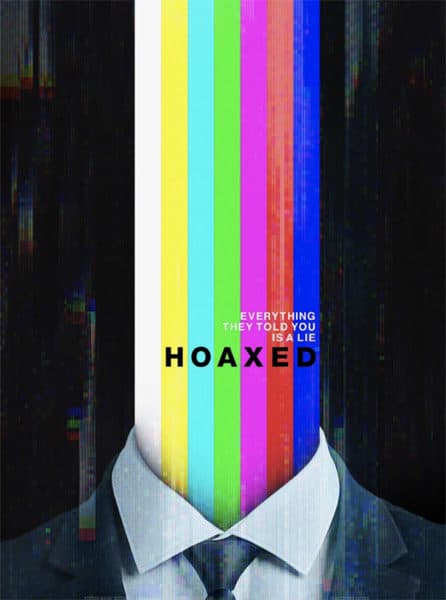‘Hoaxed: Everything They Told You Is a Lie’
- Post AuthorBy Gregory Hood
- Post DateFri Mar 15 2019
Mike Cernovich is controversial among white advocates. During the 2016 campaign, he associated himself with the Alt-Right, but later forcefully repudiated the movement, especially after the disastrous 2017 Unite the Right rally. In fairness, what “Alt-Right” meant in the summer of 2016 and what it meant a year later were not the same. Many journalists pretend not to understand this in order to smear Mr. Cernovich. Still, Mr. Cernovich never hesitates to attack foes in personal terms, and some white advocates think he is a traitor or an enemy.
Yet few would call Mr. Cernovich stupid, and no one would call him marginal. Even his enemies read him. Over the past few years, Mr. Cernovich has proven to be one of the most influential independent journalists in America and one of President Trump’s most perceptive populist critics.
Even after distancing himself from President Trump, Mr. Cernovich kept his direct connection with his audience and regularly reaches thousands of people on Periscope. His influence on social media far exceeds the hundreds of thousands of followers he has on Twitter. Aside from the person who uploaded the full video of the incident, Mr. Cernovich was arguably the person who was most influential in shifting opinions about the Covington Catholic High School students. He relentlessly exposes media double standards and finds footage that discredits liberals.
His new documentary Hoaxed: Everything They Told You Is a Lie shows that Mr. Cernovich is far more than just a provocateur. The film is a compelling, entertaining, professional, and often disturbing examination of the mainstream media. Even a viewer who already despises most journalists will be shocked by Mr. Cernovich’s examples of media mendacity. Many viewers may find they were fooled by “fake news” and “remember” phony quotations.
One of Mr. Cernovich’s most powerful examples is the story of Cassie Jaye, a fellow documentary filmmaker. Miss Jaye is best known for her 2016 documentary The Red Pill, a balanced look at the men’s rights movement. Miss Jaye got positive press for her previous documentaries on abstinence education (Daddy I Do) and homosexual families (The Right to Love: An American Family), both of which were championed by the mainstream. However, with The Red Pill, she faced hostile interviewers, protests, deplatforming, and media accusations of promoting “misogynistic propaganda.”
One television interview was subtitled “Feminist Filmmaker Changes Her Mind About Gender Equality,” and dishonestly claimed Miss Jaye no longer believed in women’s equality. “I don’t know how this smear campaign will have affected my future opportunities,” Miss Jaye tells the camera, looking shell-shocked. The answer is obvious: She has probably lost many opportunities because she didn’t tell a simplistic story. The power of one mainstream media campaign to change, and often destroy, a person’s entire life is truly terrifying.
The film lists the four steps journalists use to destroy their subjects.
- Picking the target
- Stalking the target
- Seducing the target
- Slice and dice
Megyn Kelly’s interview of Alex Jones was typical. In recorded phone conversations before her interview, Miss Kelly tries to win over Mr. Jones, suggesting the interview will humanize him. She says he is “very fascinating to me” and promises that the interview won’t be a “gotcha hit piece.” Of course, the interview was precisely that, with Miss Kelly declaring that Mr. Jones’s “baseless allegations aren’t just offensive, they’re dangerous.” Such “reporting” probably contributed to Mr. Jones’s recent deplatforming from every major social media platform, which may have been Megyn Kelly’s goal.
The most shocking example of journalistic fraud in the film is President Trump’s supposed advocacy of a “Muslim registry.” The policy was suggested by a journalist, and President Trump ignored it during the interview, instead talking about his own policies. Somehow, it was still widely reported that President Trump had called for a Muslim registry. (I thought he had done this, too.)
“They [journalists] have a special power for hearing what you said without you actually saying it,” says University of Texas Professor Alberto Martínez. Sensational claims about “dog whistles,” or secret messages somehow communicated by Republican politicians to racist followers, are a staple of mainstream reporting. Though this is not in the film, white advocates are regularly called Nazis or totalitarians for even the most moderate statements, such as “It’s OK to be white.” The film also quotes Gavin McInnes mocking journalists’ frantic reports about “a backlash” to certain people, when the sole evidence consists of tweets. I was reminded of the current deplatforming campaign against Tucker Carlson.
The film suggests several possible explanations why journalists act this way, some of them contradictory. Specifically, it accuses journalists of covering for Communism. This was undoubtedly true in many cases. One infamous example was Pulitzer Prize winner Walter Duranty, who wrote puff pieces about the Soviet Union and covered up Stalin’s extermination campaign in Ukraine.
However, in the very next segment, Virginia Tech Professor Jim Kuypers says that in the 1950s, the news tended to be “very balanced.” This was two decades after Duranty. Professor Kuypers then says the profession changed only after it was infiltrated by radicals in the 1960s, which led to liberal coverage. This conflicts with the next segment, which is about the media promoting military intervention; ’60s radicals hated the war against the communists in Vietnam.
Still, Mr. Cernovich is correct when he talks about the media’s more recent support for military intervention, which includes spreading misleading war propaganda. Examples would be the claim that Iraqis threw babies out of incubators after the 1990 invasion of Kuwait and pictures of an alleged gas attack against children by Syrian President Bashar al-Assad. The film suggests the media act this way because of money from defense contractors and the desire for ratings, though it also points out that the CIA has also manipulated media coverage. This theory is hard to square with the contention that journalists are either communist sympathizers or anti-American ‘60s radicals — though at least some New Left activists became interventionists decades later.
Mr. Cernovich explains that the media promote certain images and suppress others. The most damaging example was the photo of drowned three-year-old Aylan Kurdi that was used to push for mass immigration into Europe. In contrast, the media suppress photos of the victims of Muslim terrorist attacks, even when the attacks are committed by refugees.
The film profiles independent journalists, notably Tim Pool, who have subverted the mainstream media by using technology like GoPro to film major events. “If you turned on the news, you’re not seeing this,” says Mr. Cernovich.
He cites specific examples of media truckling, notably Glenn Thrush of Politico sending a story about Hillary Clinton to DNC chairman John Podesta for approval before publication. Mr. Thrush even called himself a “hack” in the leaked email. The compilation of media coverage of the 2016 election is devastating. Independent commentators and journalists were far more accurate and informative than mainstream staffers who contemptuously dismissed then-candidate Donald Trump.
The film notes the attempt by the mainstream to deplatform independent journalists and commentators, especially using the rationale of fighting “hate speech.” “Hate speech is free speech,” declares Lauren Southern, pointing out that people have the right to express their views, even if others find them offensive. The film also explores the history of violent antifa groups, including their communist origins and their coddling by mainstream media. The masked terrorists in the streets and the reporters in suits, the film suggests, share an agenda. “The media cover up violence by antifa,” contends Mr. Cernovich.
Mike Cernovich (Credit Image: © Sandy Huffaker/ZUMA Wire)
The film strongly criticizes the marchers in Charlottesville 2017, but does show that antifa were responsible for much of the violence and that law enforcement let it happen. Still, Mr. Cernovich further distances himself from the Alt-Right and criticizes the media for calling him part of it. “The Alt-Right may have started out as something different,” suggests Mr. Cernovich, adding, “A year ago or two years ago, it may have been just about an alternative to mainstream Republicans, but it has clearly morphed into an anti-Jewish, anti-everybody hate-filled movement.” The film includes the footage from the “Hailgate” incident, when audience members threw up Nazi salutes at the 2016 National Policy Institute conference in Washington D.C. Of course, this is an example of the selective bias Mr. Cernovich decries.
There is plenty of footage about race. There is devastating footage of CNN airing a “call for peace” from a black woman following a police shooting, when she was actually calling for rioters to burn down the suburbs rather than “our community.” The film also highlights the media’s selective focus on black victims of crime or police violence rather than white victims. However, it also suggests the mainstream media has smeared the Black Lives Matter movement and suggests it is unnecessarily magnifying divisions between Americans. This is surprising given the overwhelmingly positive coverage of Black Lives Matter and its origins in baloney about the death of Michael Brown.
The film ends with Jordan Peterson on the importance of objective truth and Stefan Molyneux giving an emotional rendition of Plato’s theory of the cave.
In a culture dominated by mass media, the power of the press to deceive, destroy lives, and launch political movements, wars, and revolutions cannot be underestimated. Politics is, above all, a war to control what we think, and mainstream media platforms are the most powerful weapons.
The film would be better if it included interviews of people who truly had their lives destroyed by media smears. Also, some in the Alt-Right (even if few still embrace the term) will probably find Mr. Cernovich’s characterization of the movement unfair.
Yet these criticisms pales in comparison to Mr. Cernovich’s achievement. The main obstacle to legitimizing white advocacy is a patently dishonest and hostile mainstream media. With one shocking example after another, Hoaxed unmasks a propaganda apparatus almost on the scale of something from the Eastern Bloc.
I despise the mainstream media and most journalists, yet even I didn’t realize the full extent of the problem. Even I had believed past versions of events that weren’t true. Other white advocates will probably feel the same way. It’s terrifying to imagine how deluded most Americans must be.
“Poets are the unacknowledged legislators of the word,” said Shelley. Today, the unacknowledged legislators are the press. Increasingly, journalists seem to be demanding that they should be acknowledged. The radical skepticism Mr. Cernovich promotes is the best form of resistance against these tyrants. His documentary is a triumph.
- Post TagsCensorship, Lauren Southern, Media Bias

